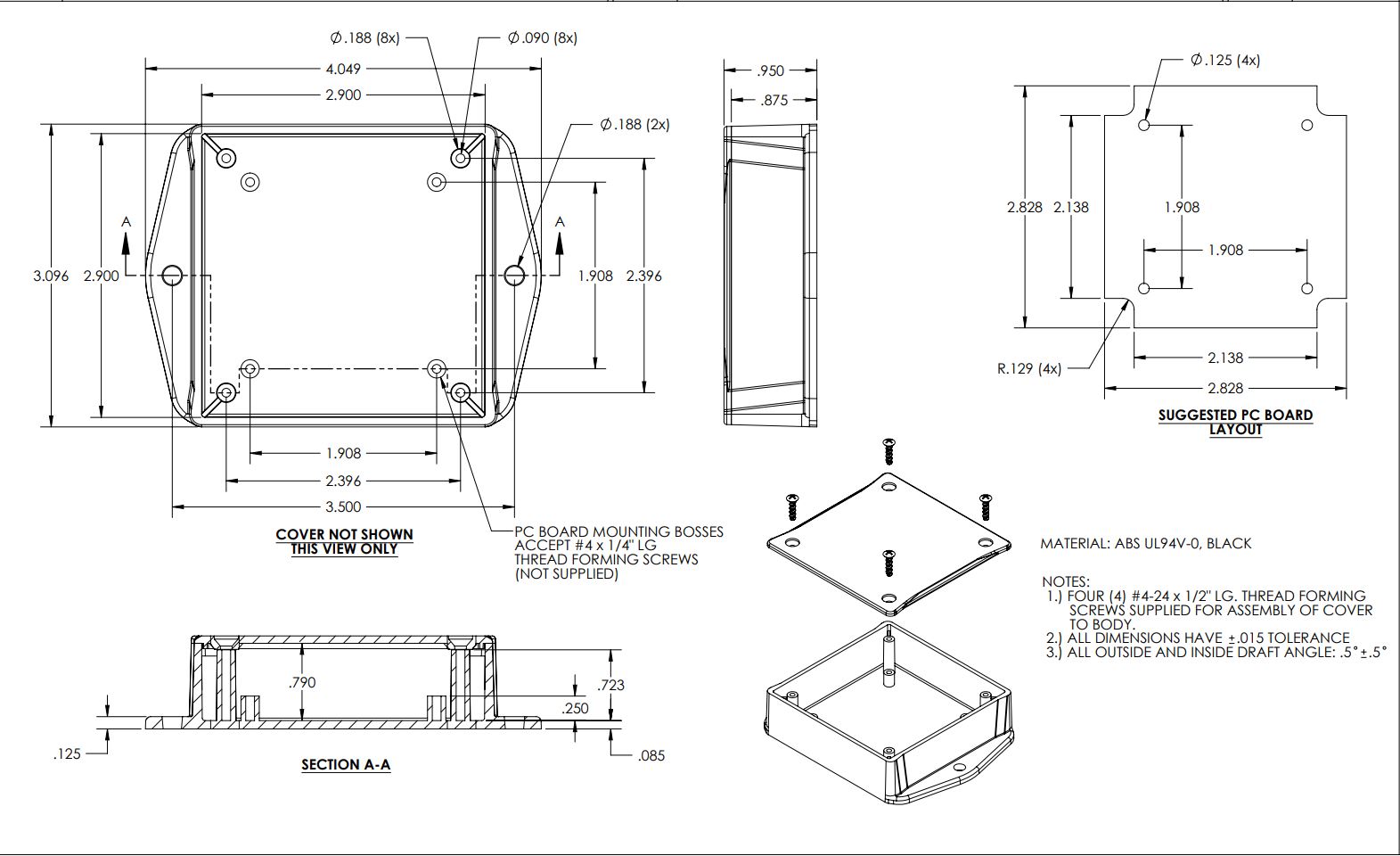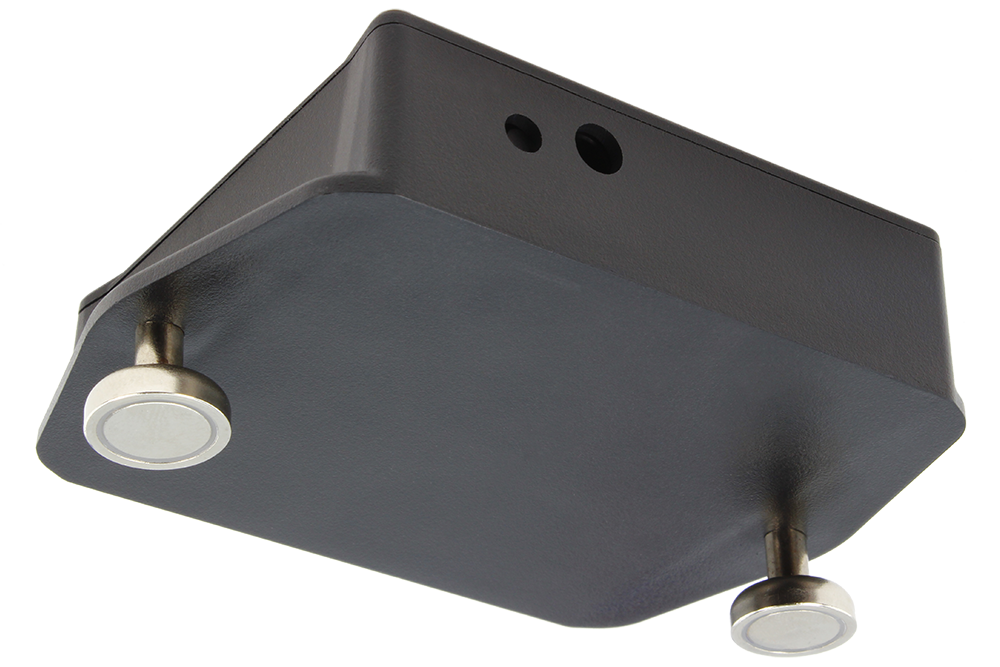IoT Long Range Wireless Environmental Temperature Humidity Pressure Air Quality Sensor
Highlights
- Industrial Grade Environment IoT Sensor for Monitoring
- Temperature, Pressure, Humidity, Gas Resistance & Indoor Air Quality
- Operating Temperature Range -40 to +85 °C
- Operating Pressure Range 300 to 1100% hPa
- Operating Humidity Range 0 to 100% r.H.
- Gas Resistance Output in Ohms
- Inbuilt Indoor Air Quality Metric Calculation with a 0-100 Range
- Configurable Heater Temperature & Duration for Gas Resistance Sampling
- 2 Mile Range with 900MHz On-Board Antenna
- Superior LOS Range of up to 28 miles with 900MHz High-Gain Antennas
- Interface to Raspberry Pi, Microsoft Azure, Arduino and More
- Example Software for Visual Studio and LabVIEW
- Wireless Mesh Networking using DigiMesh®
- Power Efficient Built-in Sleep mode
- Secure Transmission using AES-128 Encryption
Retired Notice: This Sensor is Retired
This sensor is currently retired. We don’t recommend this product for new customers. Don’t worry though, we can still make it for you if it’s absolutely required, but minimum purchase quantities of 10 pieces will apply. We may need extra time to get this back into production, please click the “Help” Button in the lower right corner of the screen to contact us. We do have alternative sensors available. The extra batteries and extended battery life in the updated version has been a great benefit to our customers. Please see the updated product below:
IoT Long Range Wireless Environmental Temperature Humidity Pressure Air Quality Sensor
Introducing NCD’s IoT Wireless Environment Temperature Humidity Pressure and Air Quality Sensor, boasting up to a 2 Mile range using a 900MHz wireless mesh networking architecture. Incorporating a high-resolution sensor, this device samples and processes temperature, pressure, humidity and gas resistance. Once environmental data is collected, it transmits this information to a gateway or modem up to 2 miles away. The whole process is repeated at user-defined intervals. For technical details on the sensing capabilities, please refer to the BOSCH BME680 datasheet. Powered by just 2 AA batteries and an operational lifetime of 300,000 wireless transmissions, a 3 years battery life can be expected depending, based on environmental conditions and the data transmission interval. Optionally, this sensor may be externally powered.
There is no better Long Range Wireless Environment Temp Humidity Pressure and Air Quality Sensor on the market today. Nothing compares with the long range, the price, the accuracy, the battery life, or the security features we have to offer.
Note- This sensor has in built heater and it takes around 30 minutes to burn in. During the burn in time, the sensor need to be placed in a clean air environment.
Transmission Interval
This device sends data periodically, based on user-preset timing intervals.
IoT Sensor Data Transmission
NCD IoT Sensors send a lot more than just sensor data. Of course the sensor data is also included in the data packet, but other important data is also included. For instance, a unique serial number is sent so you can always identify a particular sensor on the network. A Node ID is also included, which a single byte of data that you can use for anything, such as the floor of a building or to help identify which group a sensor belongs to. Also included in the data packet is a firmware version, battery level, and sensor type. This allows your software to positively identify and manage the health of NCD IoT wireless sensors. While signal strength data is also available, it is handled in a different way, and is not included in the sensor data packet (but rest assured, signal strength data for each sensor is available). Please see the Resources tab to see detailed information on the data structure of this device.
This wireless transmitter needs a receiver. There are many options available for receiving data from NCD IoT devices, please see below for a in-depth description of destinations available for NCD sensors. We highly recommend using our USB Modem (available during purchase) so you can monitor this device and use our LabVIEW® software for changing device settings. Some sensors have advanced settings that can help send alerts when problems are detected while other settings can be used to adjust communication frequency, which will directly affect battery life.
How Long will the Batteries Really Last?
Most NCD IoT Sensors are rated for about 500,000 transmissions until the batteries become so weak they are unreliable; however, this particular sensor consumes more power than most, and carries an expected life of 300,000 transmissions or up to 3 years of life. With 100,000 transmissions per year, you should expect to see up to 273 transmissions per day or 11 transmissions per hour. The battery life could be extended by reducing the number of transmissions per day, so the battery life is really up to you. By altering advanced settings in the NCD IoT sensor, you have control over longevity. NCD ships all sensors with premium Lithium batteries, which include a ultra-wide temperature range that typically lasts in excess of 300,000 transmissions. These batteries weigh less than half of alkalines, and they work in the freezer! A word of caution though, putting a sensor in configuration mode will drain the batteries very quickly. It’s important to configure your sensors and exit configuration mode as soon as possible or use a external power supply during configuration (if supported by the sensor).
How Do I Change Settings and Examine Raw Sensor Data?
Using our long-range USB wireless modem, users can expect easy operation over a virtual COM port at 115.2K baud. Simply open the virtual COM port of the USB modem and watch data stream in. Optionally, we offer a Wireless receiver that operates over Ethernet. Data from NCD sensors will appear over TCP/IP on port 2101. Simply open a TCP/IP socket, port 2101, to the IP address of the Ethernet modem and see your data stream in to your local area network. Alpha Station was developed to work with our wireless modems. Of course gateways are also available for sending data to popular cloud platforms such as Azure® and Losant (more information below). We take software samples seriously, so be sure to to check out the “Resources” tab to see code samples for Raspberry Pi, Visual Studio, LabVIEW®, Arduino, Python, and more.

IoT Environmental Sensors Applications
- Long Endurance Industrial Automation
- Indoor Air Quality Monitoring
- Home Automation and Control
- Component of a IoT HVAC System
- Weather Forecast at Remote Locations
- Wireless Weather Monitoring for Raspberry Pi/Arduino
- Wireless Air Quality Monitoring for AWS® and Azure®
Mechanical Drawing

Wiring Diagrams
Essential
Documentation Downloads
Community Repositories
Enterprise 868 MHz Sensors
Enterprise 900MHz Sensors
Not for use in outdoor applications or for use in excessive temperature conditions. Prolonged freezing will prevent batteries from functioning until thawed, using extended temperature range industrial batteries may improve the useful temperature range. Extended freezing applications should use a full-time powered solution. Prolonged exposure to extreme humidity conditions may damage this device. The sensing element is rated for use for 5 years and may be replaced. Exposure to high temperatures may cause the batteries to leak, causing permanent damage to this device. NCD Warranty does not cover battery corrosion or use in excessively smoky environments under any circumstances.
900HP-S3B Wireless Compatibility Notes
Notice: Compatibility Notes Does NOT Apply to the Following Products:
- NCD Enterprise Solutions
- NCD Wireless Sensors
- NCD Enterprise Modems and Gateways
Notice: Compatibility Notes Applies to NCD Industrial Products, Including Fusion, ProXR, ProXR Lite, Taralist, and Reactor Series Products.
Compatibility Notes
When using an 900HP-S3B communication module, it is essential that you use the ZIGMO_PCB to configure the module settings. Long-Range wireless sensors may be programmed over the air without removing the communications module.
A 900HP-S3B Modem or a gateway of some kind that support the 900HP-S3B communications module will also be required.
Available on backorder



